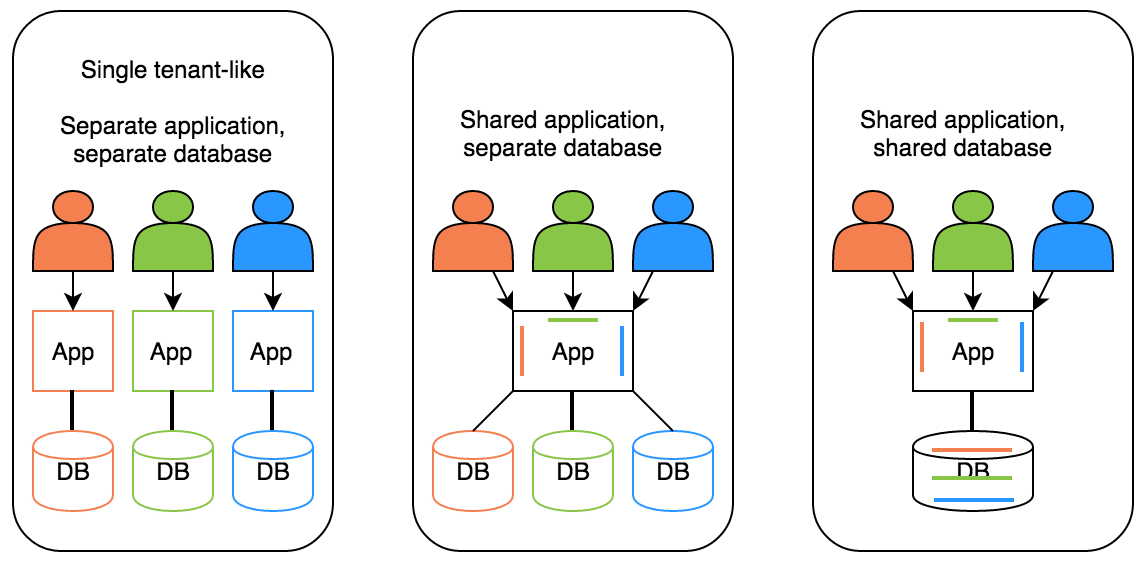Page History
...
One important aspect in a multi-tenant is data separation. Persistent data for one tenant should under no circumstances be shared with other tenants. The image below lists strategies on how a multi-tenant system can be set up. Blueriq doesn't support the third strategy. When you are creating the solution architecture for your multi-tenant solution, you should consider the trade-offs that each strategy has.
| Not supported by Blueriq | ||
We expect the solution architect to consider the characteristics of each strategy and choose what suits best. For example, if you run on a container platform, the first solution may be more feasible, while when you run on VMs, the second strategy may be easier. Aspects that you may want to consider are operating costs, maintainability, data separation, availability, elasticity, flexibility and scalability.
...
